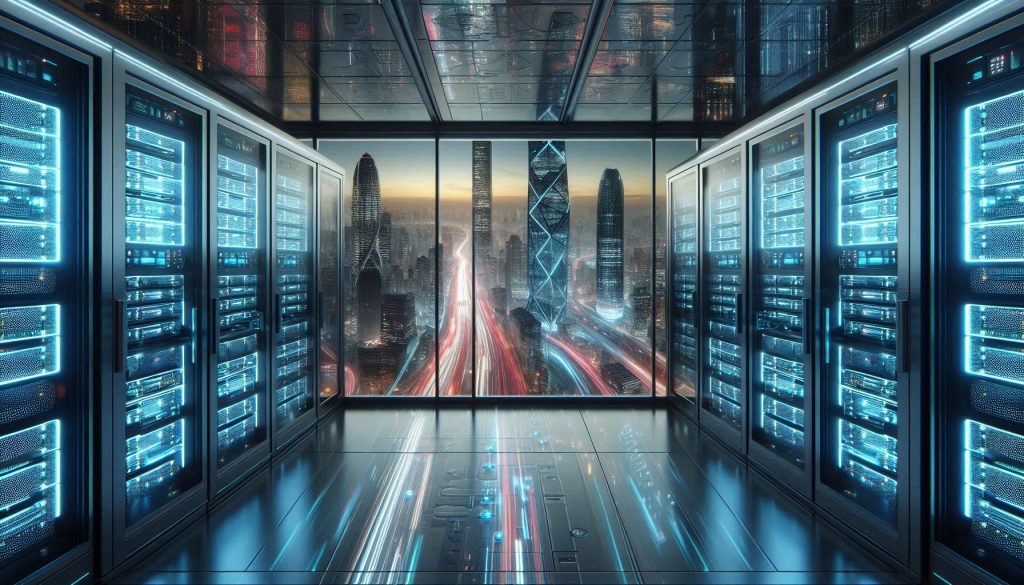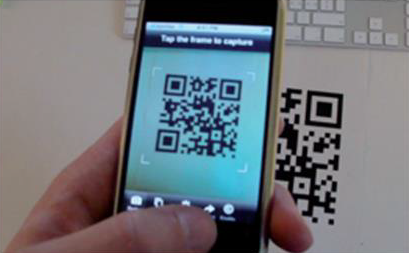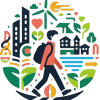The rol of technology in Smart Cities
5 key concepts to grasp climate change
Learning Objectives
- Understand how digital technologies are used in Smart Cities 3.0.
- Explore the benefits and challenges of technological development in urban environments.
- Identify key tools such as IoT, AI, and Big Data.
- Learn how technology enables citizen participation, sustainability, and urban efficiency.

10 min read
Course Overview
INTRODUCTION
Technology is at the heart of Smart Cities 3.0, but it’s not about tech for tech’s sake. In this new stage of urban development, technology serves people—it’s a tool for creating more inclusive, resilient, and efficient cities. From data-driven policies to participatory apps, technology enhances how cities respond to challenges and deliver public services.
This module explores how Smart Cities 3.0 integrate innovation in a way that centers on citizens. We’ll look at the tools involved, their impact on governance and sustainability, and the balance between opportunity and ethical responsibility.
1. SMART TECHNOLOGIES FOR URBAN SOLUTIONS

What Makes a City “Smart”? It’s not the number of gadgets—it’s the integration of technology with sustainable, accessible policies that improve quality of life. Smart solutions rely on:
- Sensors for real-time information (e.g., air quality, traffic, noise).
- Platforms to collect and visualize data (dashboards, open data portals).
- Smart devices that connect and react (smart lighting, trash bins, public Wi-Fi)
Examples of Smart City Technologies
2. THE INTERNET OF THINGS (IoT)
The Internet of Things (IoT) is a network of connected devices that collect and share data.
Application in Cities:
- Streetlights that dim when no one is around.
- Smart bins that notify sanitation teams when full.
- Parking sensors that guide drivers to free spots.
IoT enables cities to be more responsive and efficient, reducing waste and improving safety. However, it also requires strong digital infrastructure and raises concerns about privacy and surveillance.

3. ARTIFICIAL INTELLIGENCE (AI) & BIG DATA
AI refers to machines simulating human decision-making. Big Data is the massive volume of information collected through connected devices.
Use Cases
- Predictive Analytics: AI forecasts traffic patterns, water usage, or electricity demand.
- Automation: AI supports services like chatbot helpdesks or traffic light regulation.
- Decision Support: Big Data helps policymakers see patterns and adjust strategies quickly.
Ethical Considerations
- Bias in data and algorithms
- Lack of transparency in automated decision-making
- Risk of surveillance without consent
Smart Cities 3.0 must combine innovation with clear ethical and legal frameworks.
4. TECHNOLOGY FOR CIVIC ENGAGEMENT
Smart technologies should strengthen, not replace, democratic engagement.
E-Participation Tools
- Decidim (Barcelona): Participatory platform for planning and budgeting.
- Consul (Madrid): Citizens propose and vote on public projects.
- Digital Consultations: Online tools gather opinions before decisions are made.
Benefits
- More voices included, especially marginalized groups.
- Faster response to community needs.
- Transparency and accountability.
Risks
- Digital exclusion of those without access or skills.
- Tokenism—engagement without real impact.
- Cybersecurity threats.
Solutions must combine digital tools with offline engagement and capacity-building.
5. SMART CITIES & ETHICAL TECHNOLOGY
While technology enables innovation, cities must uphold ethical standards.
Key Principles
- Transparency: Residents should know what data is collected and why.
- Security: Protect citizens’ data from breaches.
- Equity: Ensure digital inclusion for all communities.
- Sustainability: Tech must serve climate and social goals.
Smart City 3.0 embraces responsible innovation—where privacy, fairness, and long-term impact are central.
Click here to download the full content!
ACTIVITY: TECHNOLOGY ETHICS DEBATE
Objective: Explore ethical dilemmas of smart technologies.
Instructions:
- Divide into groups: each group represents a stakeholder (citizens, city council, tech companies, NGOs).
- Present a case (e.g., installing facial recognition cameras).
- Debate benefits and risks from each perspective.
- Propose a policy that balances innovation and rights.
Outcomes:
- Practice ethical reasoning.
- Understand stakeholder needs.
- Learn to negotiate inclusive tech policies.
KEY TERMS - GLOSSARY
- IoT: Network of devices exchanging real-time data.
- AI: Machine learning to simulate human thinking.
- Big Data: Large-scale data sets used for analysis.
- E-Participation: Online civic engagement tools.
- Transparency: Clear, accessible information about how decisions are made.
- Digital Inclusion: Equal access to digital tools and services.
QUIZZES
Quiz 1
Quiz 2
Quiz 3
BIBLIOGRAPHY
Bable. (n.d.). AI for smart cities
Bable Smart Cities
https://www.bable-smartcities.eu/es/explorar/soluciones/solucion/ai-for-smart-cities.html
Bouskela, M., Casseb, M., Bassi, S., De Luca, C., & Facchina, M. (2016)
La ruta hacia las smart cities: Migrando de una gestión tradicional a la ciudad inteligente. Inter-American Development Bank
Daneva, M., & Lazarov, B. (2018, May)
Requirements for smart cities: Results from a systematic review of literature. In 2018 12th International Conference on Research Challenges in Information Science (RCIS) (pp. 1-6). IEEE.Giffinger,R., Fertner, C., Kramar, H., Kalasek, R., Pichler-Milanovic, N., and Meijers, E. (2007). Smart Cities. Ranking of European Medium-Sized Cities, Research Report, Vienna University of Technology, 2007
(http://www.smart-cities.eu/download/smart_cities_fi nal_report.pdf)
eSmartCity. (n.d.)
AI: Artificial Intelligence . eSmartCity. Retrieved 04 Nov 2011, from
https://www.esmartcity.es/ia-inteligencia-artificial
Kyriazopoulou, C. (2015)
Architectures and requirements for the development of smart cities: a literature study. In Smart Cities, Green Technologies, and Intelligent Transport Systems: 4th International Conference, SMARTGREENS 2015, and 1st International Conference VEHITS 2015, Lisbon, Portugal, May 20-22, 2015, Revised Selected Papers 4 (pp. 75-103). Springer International Publishing.
Medina, I. L., Baeza, V. M., & Sánchez, C. M. (2021)
Integración de las tecnologías del habla en el transporte público de Smart Cities
Monzon, A. (2015, May)
Smart cities concept and challenges: Bases for the assessment of smart city projects. In 2015 international conference on smart cities and green ICT systems (SMARTGREENS) (pp. 1-11). IEEE.
Telefónica, F. (2011)
Smart Cities: un primer paso hacia la internet de las cosas. Fundación Telefónica.
Tarazona Lizarraga, C. (2020)
Análisis de las necesidades de una Smart City en el marco de un desarrollo sostenible.
Preukschat, Alex. 2017
Integración, seguridad y tranaparencia: las paortaciones de la tecnología en las Smart Cities. 2017
Ospina Varón, A. C. (2013)
Seguridad en MTC-transmisión en la zona de sensores en MTC y M2M en aplicaciones orientadas a Smart Cities
Yigitcanlar, T., Desouza, K. C., Butler, L., & Roozkhosh, F. (2020)
Contributions and risks of artificial intelligence (AI) in building smarter cities: Insights from a systematic review of the literature. Energies, 13(6), 1473.
Accessibility tools

